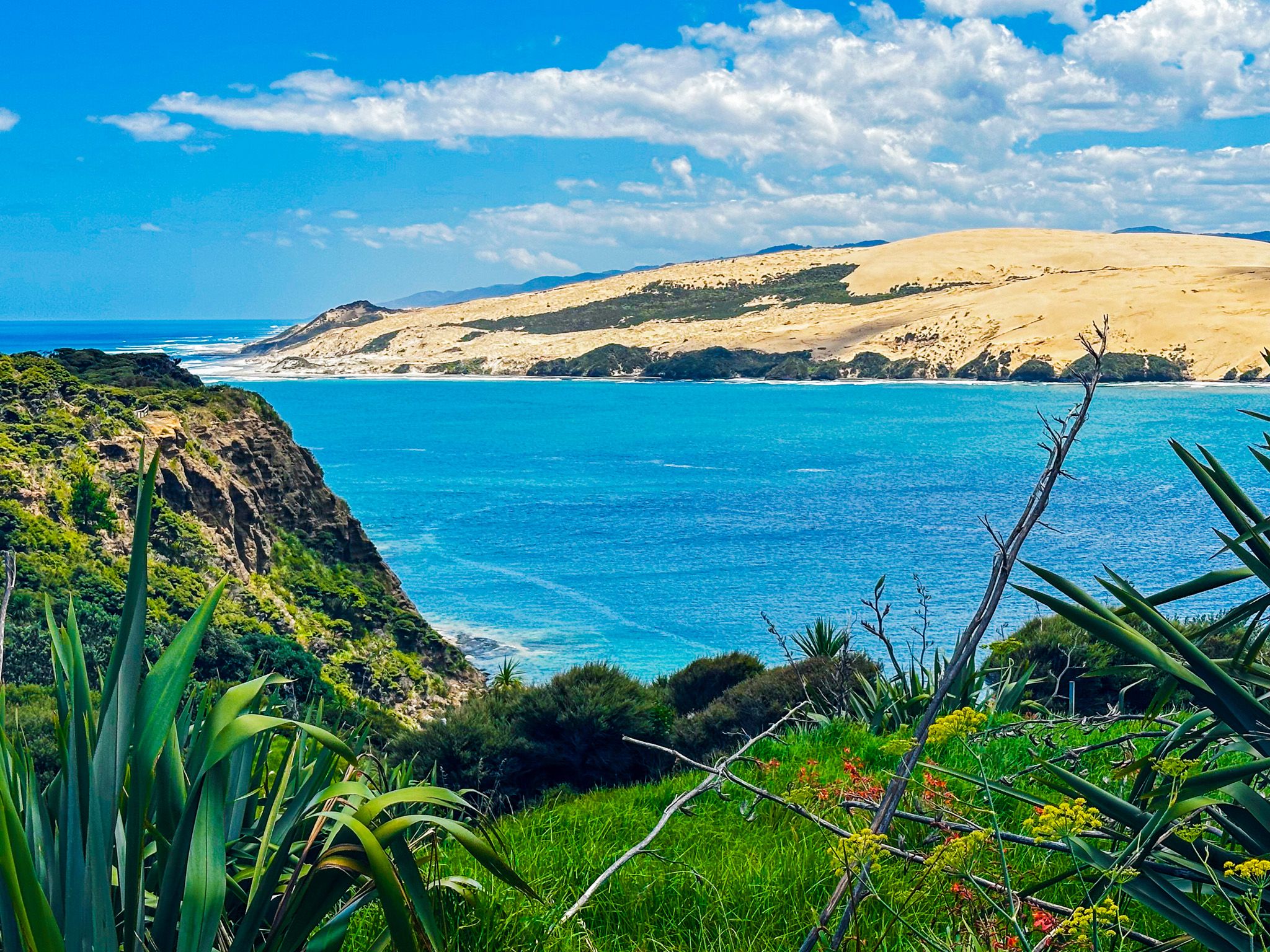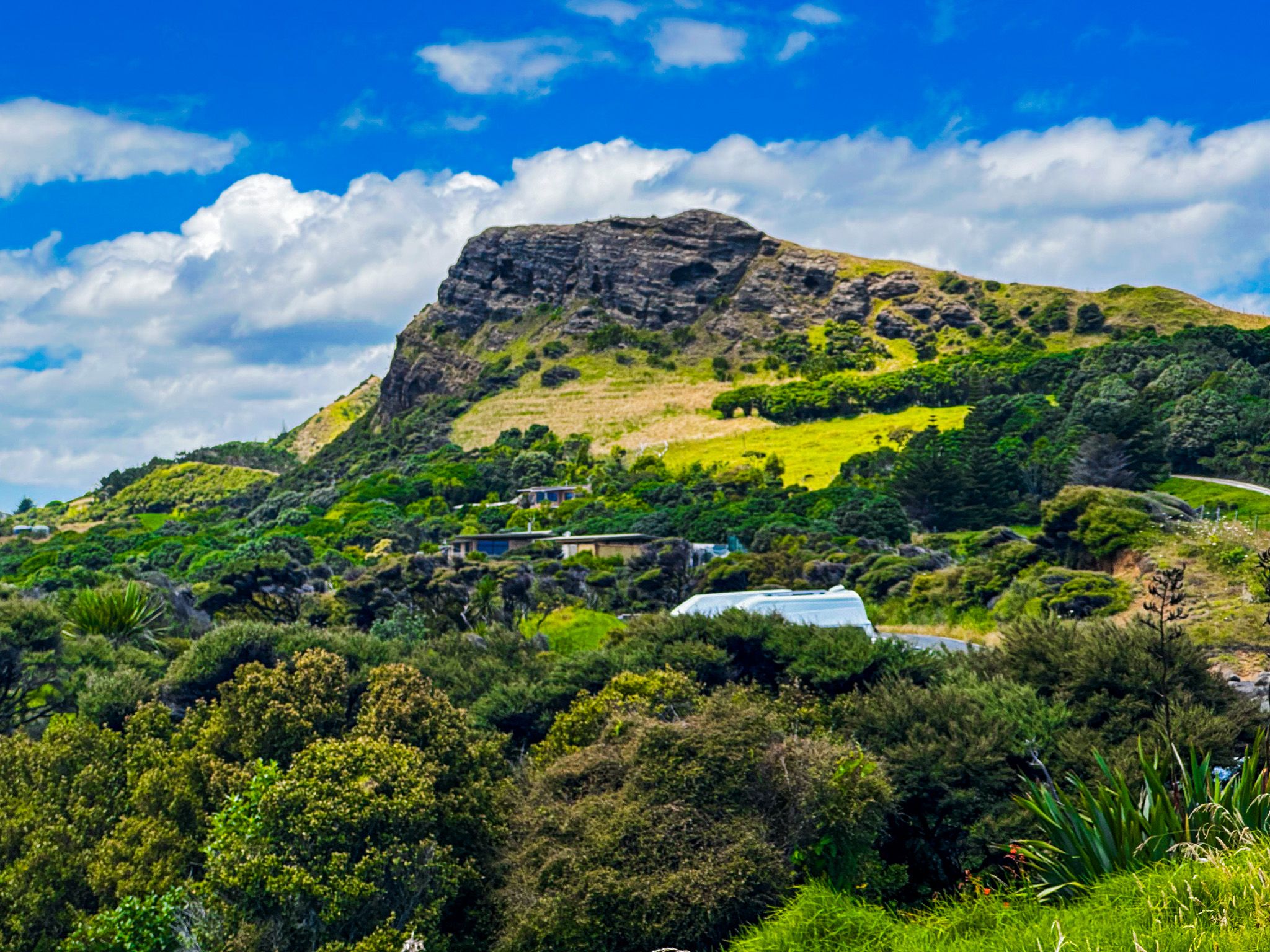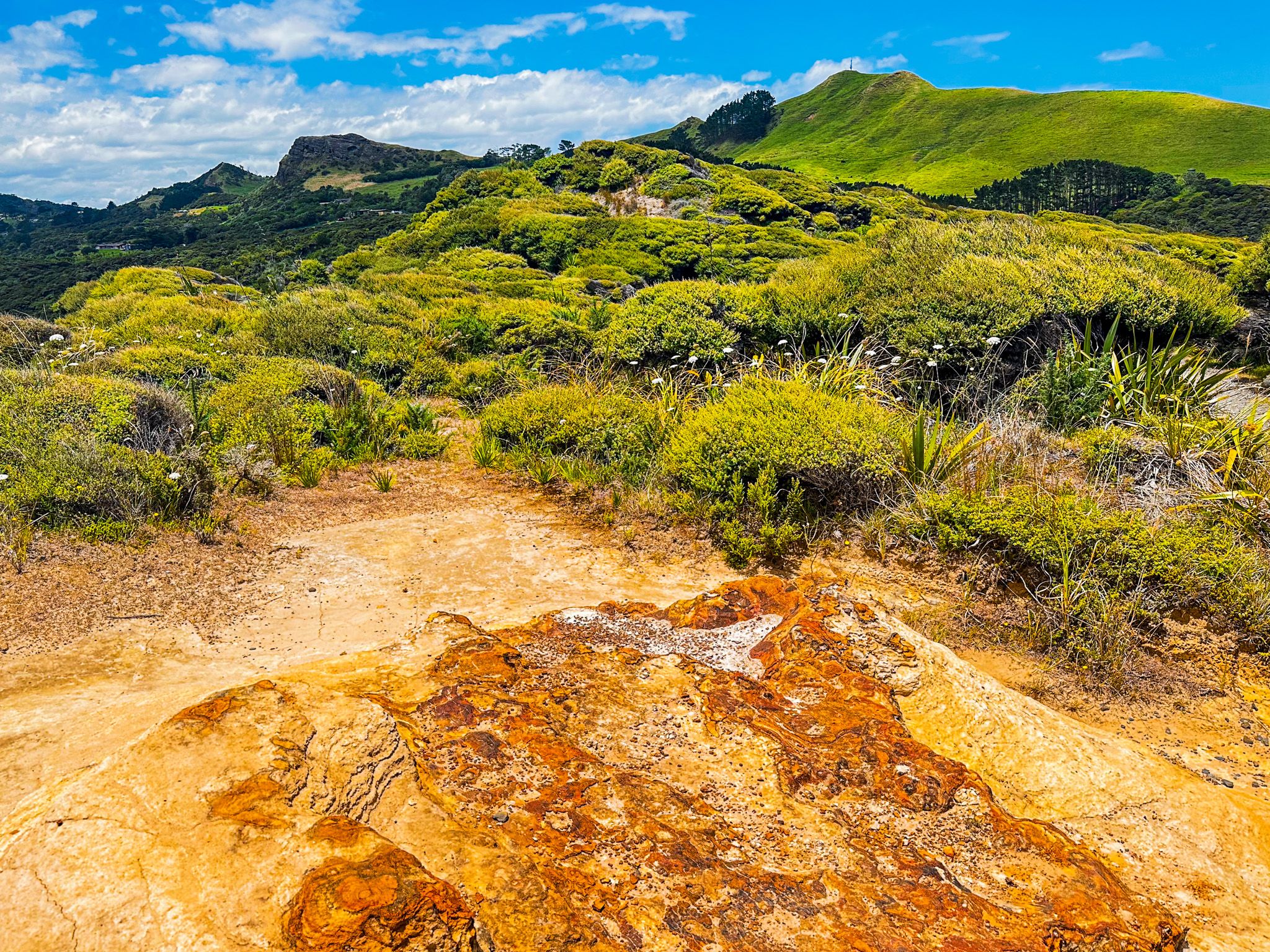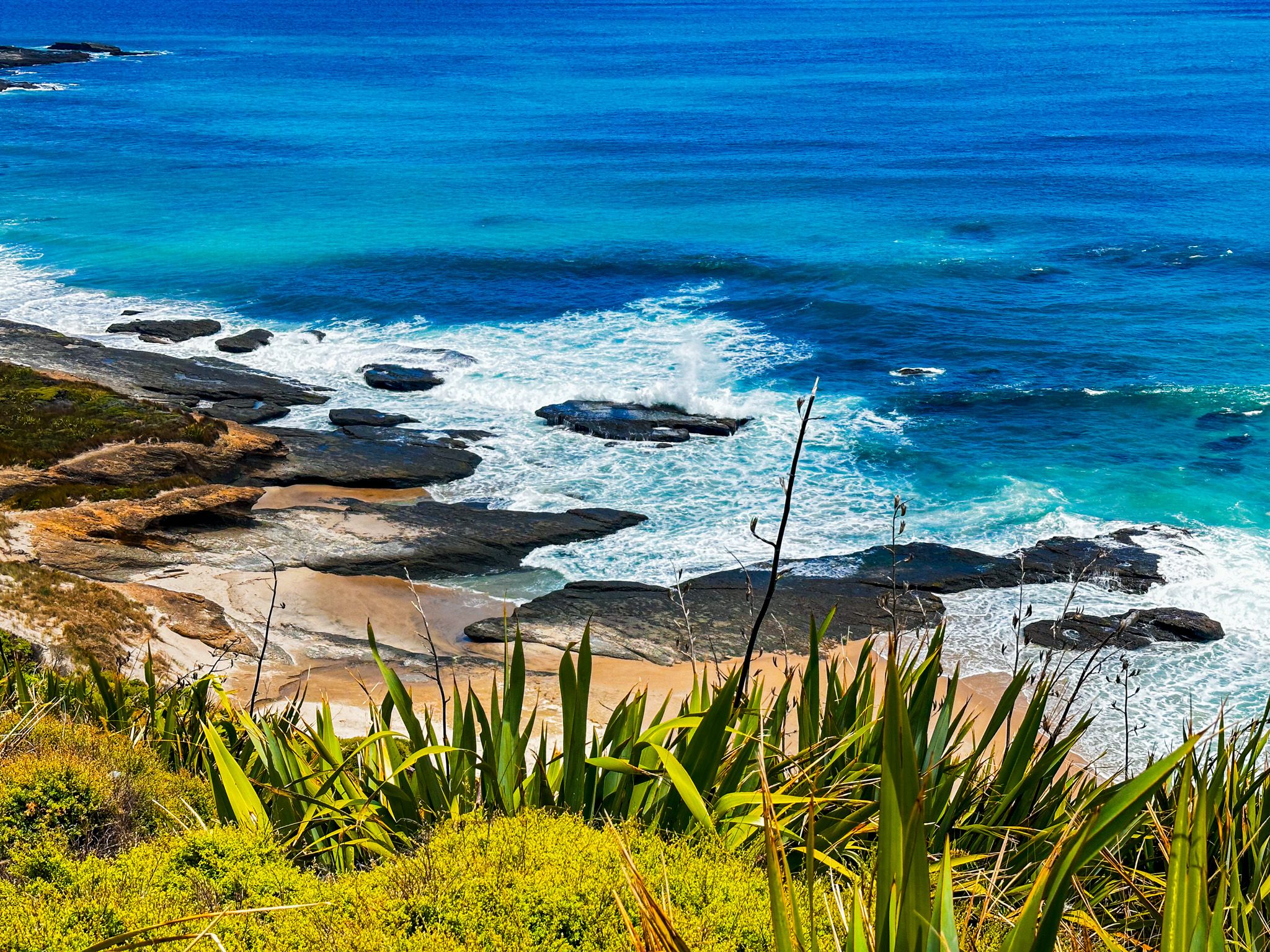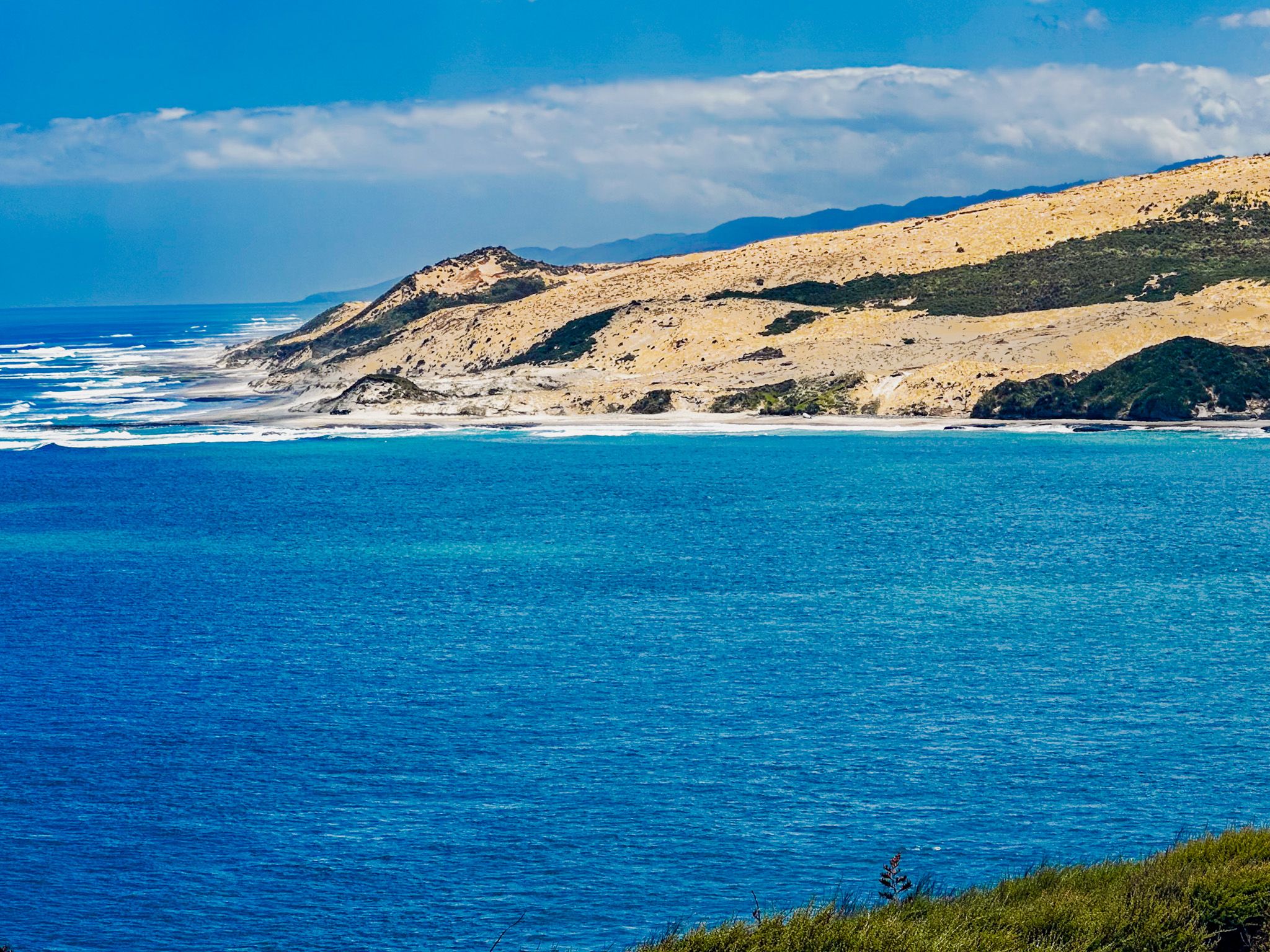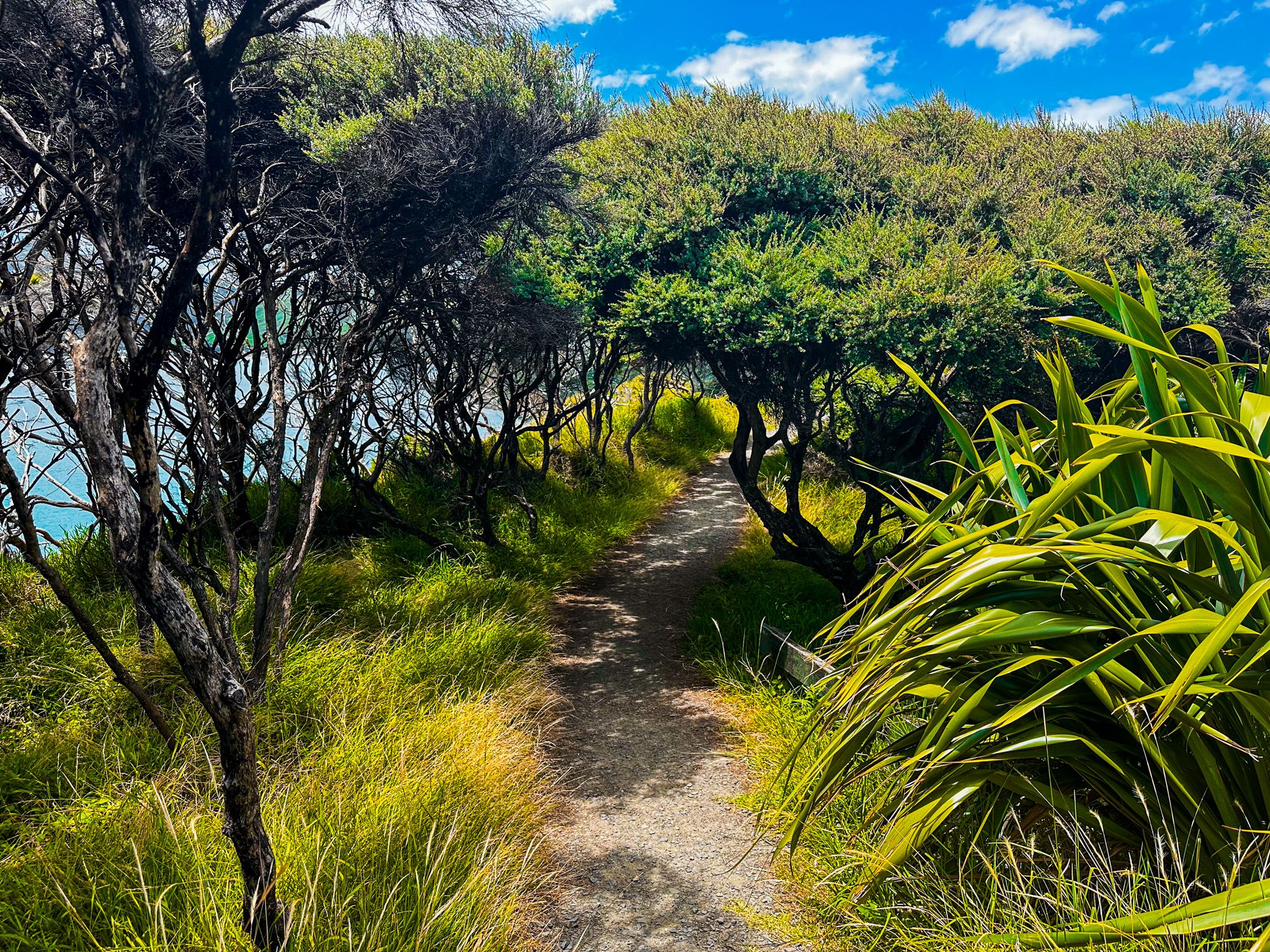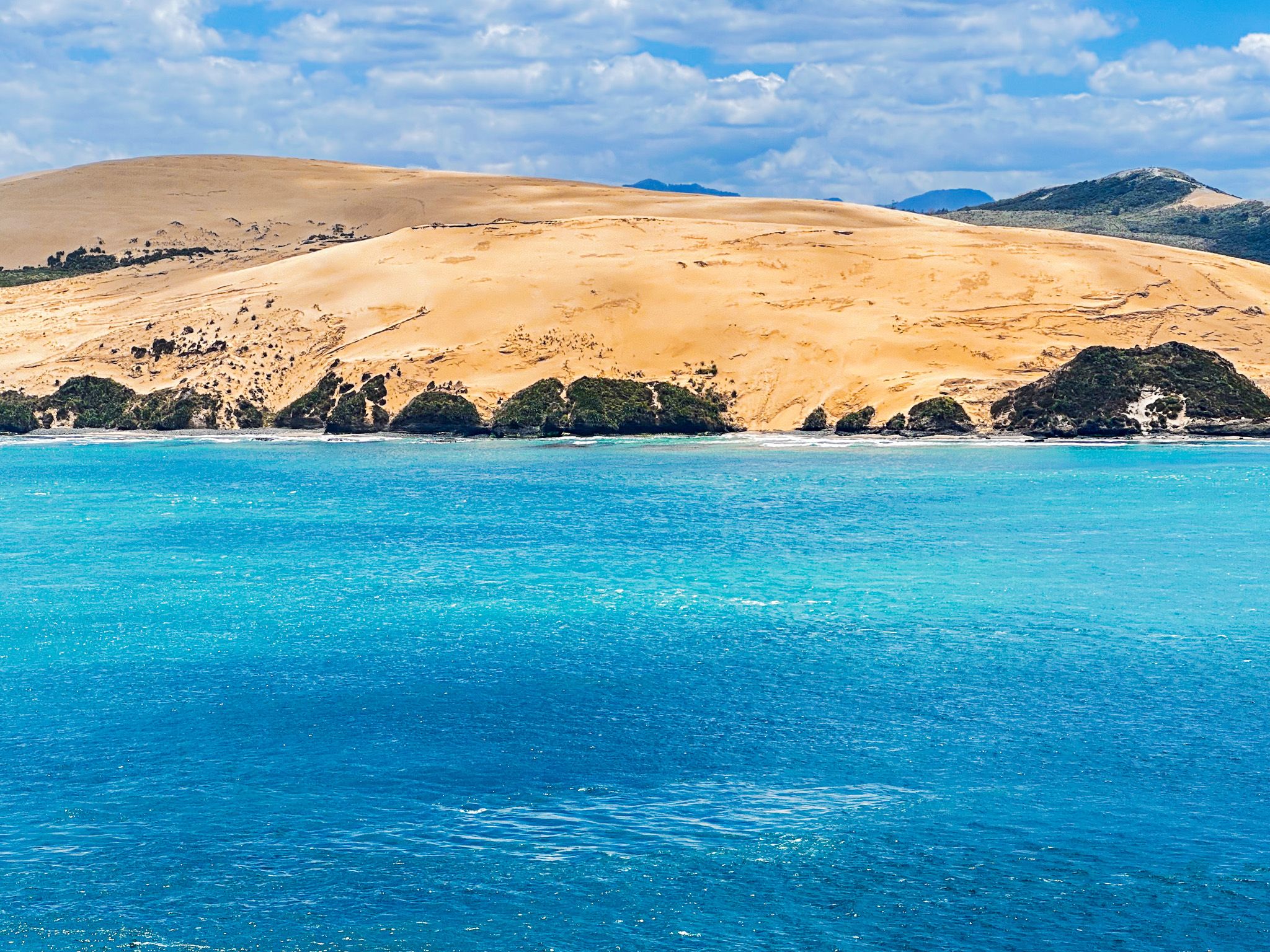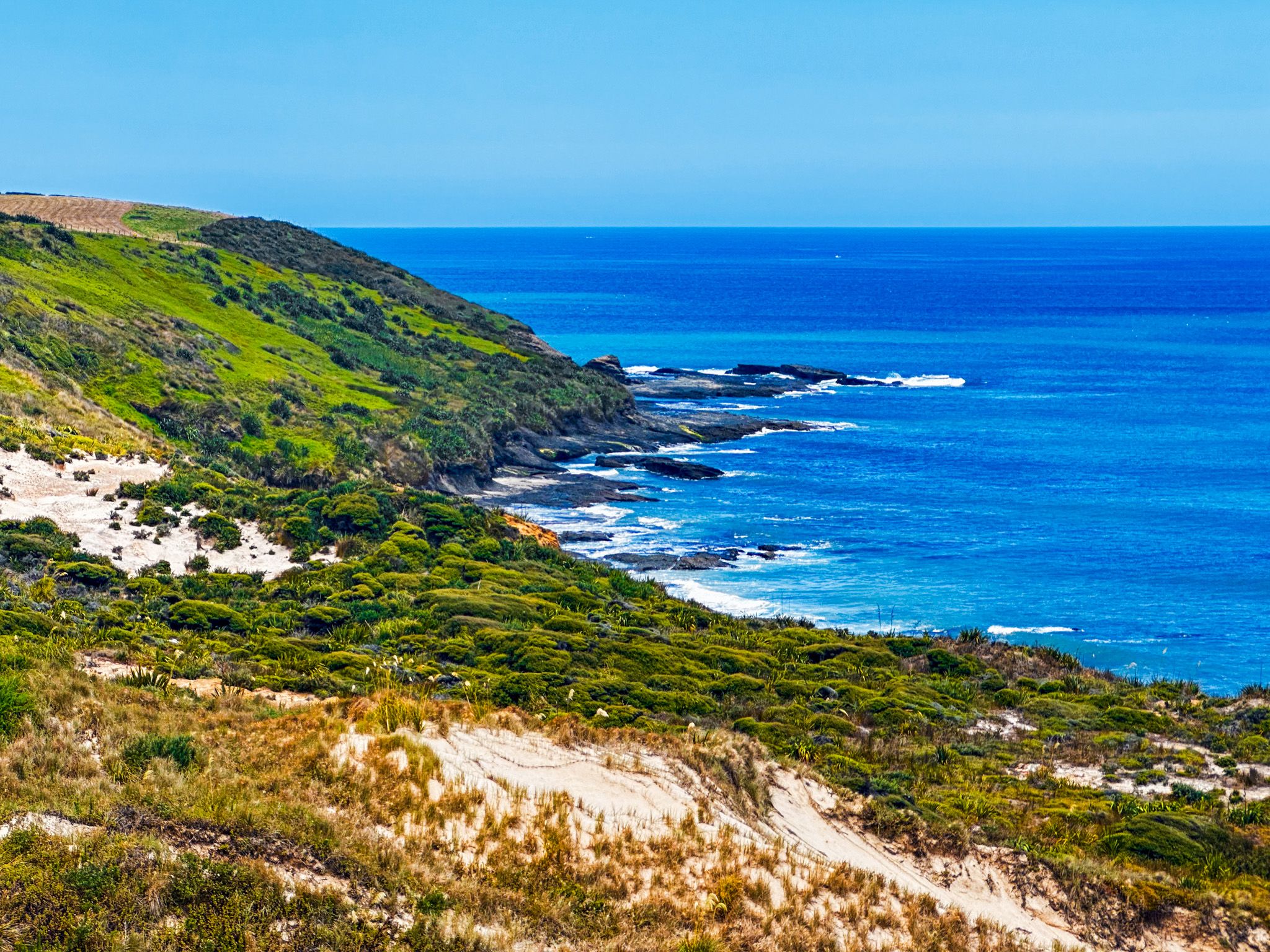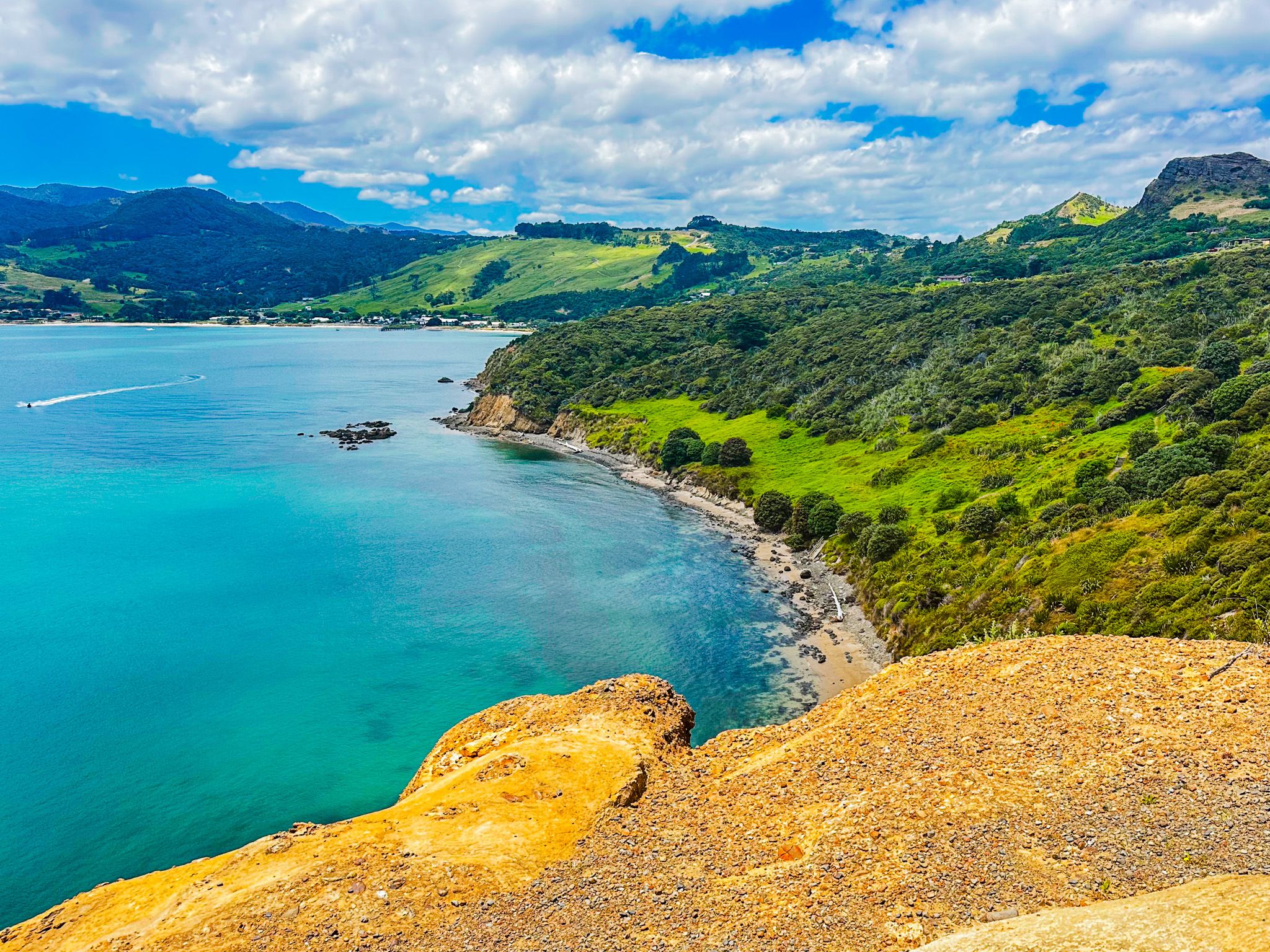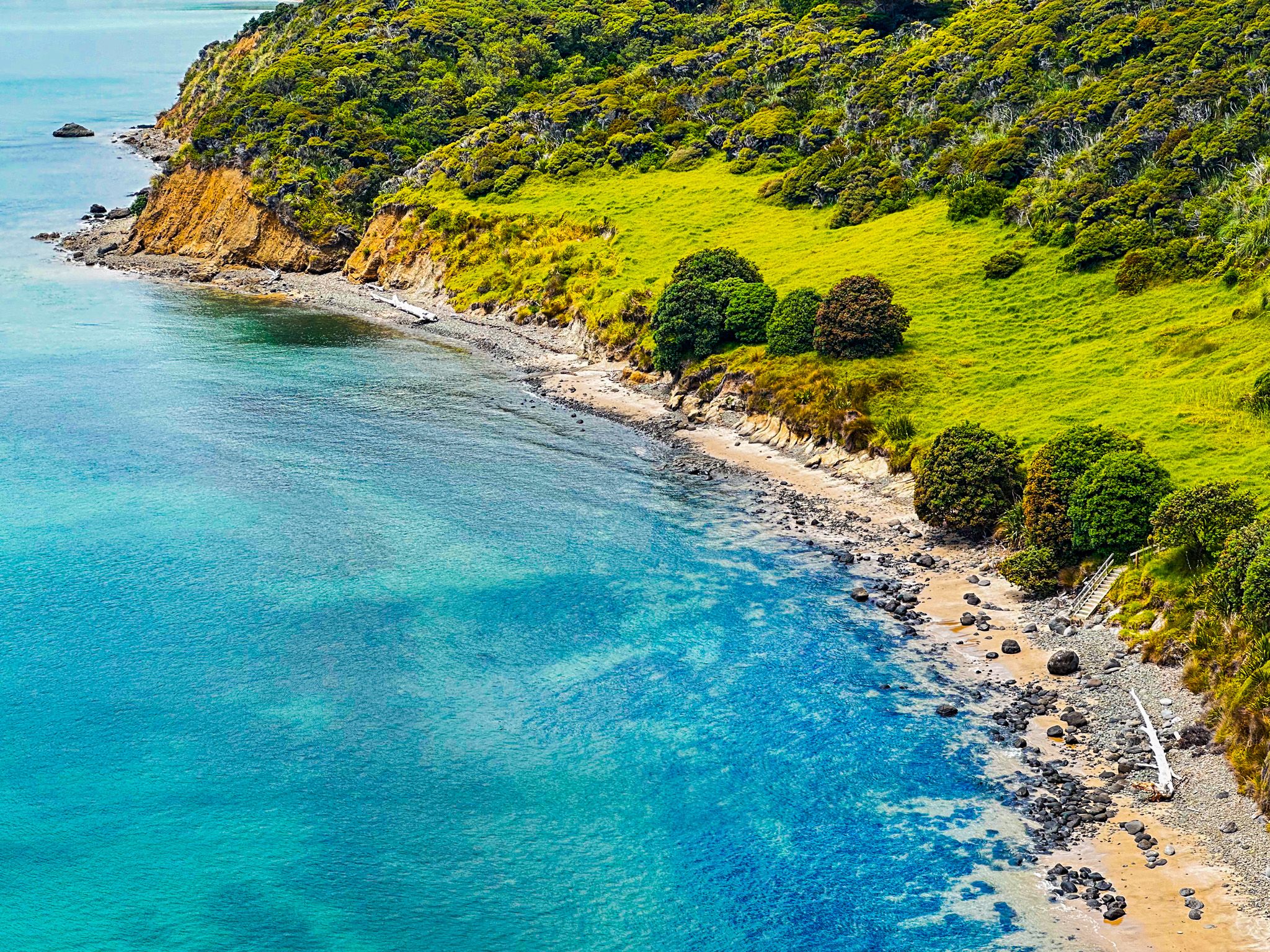Discover Arai-Te-Uru / South Head
Arai-Te-Uru / South Head is a captivating short walk and viewpoint located on the Hokianga Harbour in Northland. This site offers visitors a chance to explore the rich history and stunning landscapes of the area.
One of the highlights is learning about its discovery by the legendary Polynesian navigator Kupe and his companion Kuramārōtini, with panels detailing Kupe’s eventual departure and the settlement of Hokianga by his descendants, Nukutawhiti and Ruanui.
A memorial panel also pays tribute to the victims of the treacherous harbour bar, which has claimed 23 shipwrecks.
Scenic Views and Walking Tracks
You can enjoy a picnic area with picturesque views of the harbour near the car park. However, for the most breathtaking vistas, follow the track to the end of the head. Here, you will be rewarded with panoramic views of the harbour entrance, the vast dunes on the north side, and the rugged west coast beach and rock formations to the south. For those with more time, the Waimamaku Coastal Track provides a 10.9 km (approximately 4-hour) trek to the remote Kaikai Beach and Waimamaku Beach Road. Alternatively, a shorter walk to the charming beach at Martins Bay is also an option.
Significance of the Māori name
The headlands of Hokianga Harbour were given simple names by early European settlers: South Head and North Head. In contrast, the Māori names are rooted in mythology. According to legend, Kupe, the Polynesian explorer who discovered Aotearoa, instructed two taniwha to protect the harbour and guide future travellers. Ārai-te-uru guards the south side, while Niua watches over the north.
Guardianship and Signal Station
Approximately 900 years after Kupe's time, Ārai-te-uru gained a modern guardian in the form of a signal station. John Martin and his wife Kiriora, granted the land by local rangatira, established the station in 1870. They and their family managed it for 81 years until its closure in 1951, ensuring the safe passage of many across the Hokianga bar.
How to Get There
To reach Arai-Te-Uru / South Head, take Signal Station Road from State Highway 12, just south of Ōmāpere. This road leads directly to the car park, where the walk begins.
While in the area, there are many other options for exploration. Visit historic Rawene and take the car ferry to Kohukohu. The Koutu Boulders are an alternative to the famous Moeraki Boulders, and the beaches along the southeast side of the Hoikanga Harbour from Opononi to Ōmāpere are very attractive.
